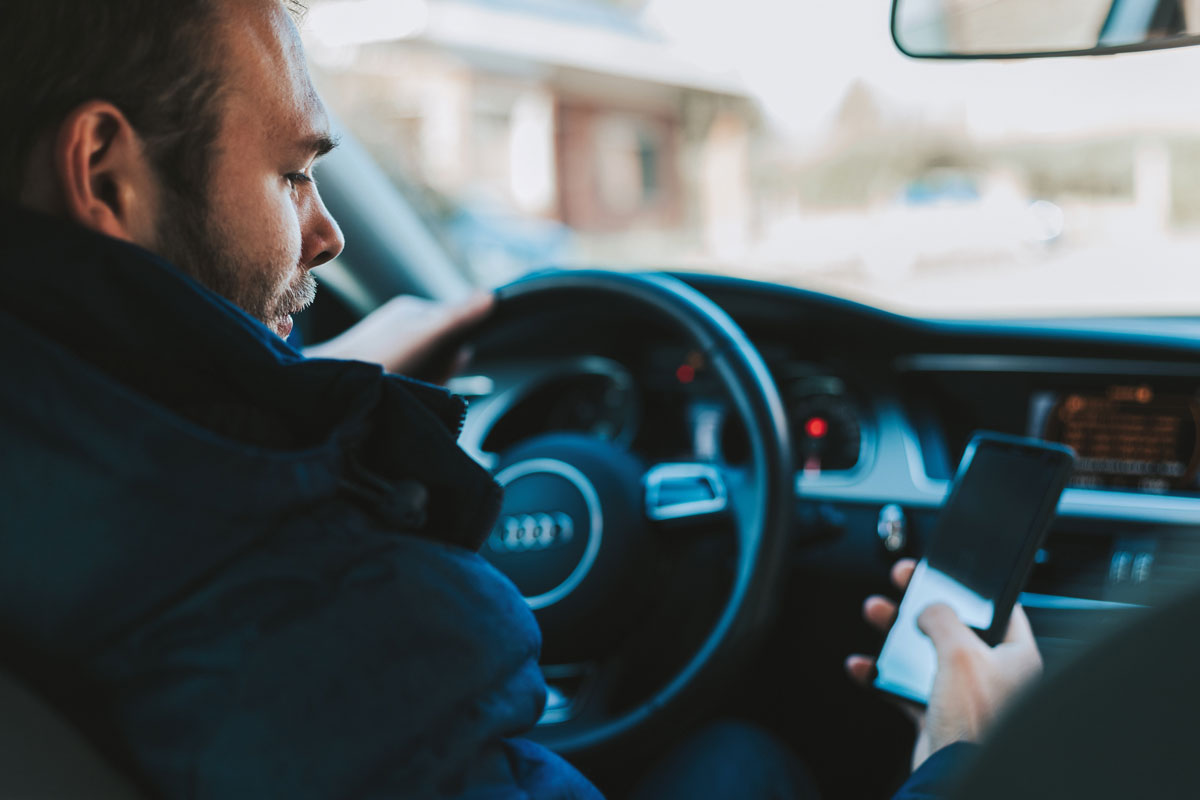There are roughly 8.2 million people living in Virginia[1], and approximately 5.4 million of them are registered drivers[2]. With this many people on our roads, it’s a small wonder that there were only 124,000 reported traffic crashes in 2012[3]. The Virginia Department of Motor Vehicles (“DMV”) does give statistics on alcohol and speed related accidents, but doesn’t currently give any for accidents caused by distracted driving. However, the US Department of Transportation (“USDOT”) does have some national statistics on the issue. It reports that distracted drivers caused or contributed to 10% of crashes involving injuries in the US in 2011[4], which is an alarming statistic. With the growing usage of smart phones it is likely that this statistic will continue to rise.
Though there are many types of distracted driving, texting-and-driving is quickly becoming the most common cause of distracted drivers, especially among the 15-19 year old age group. In fact, 21% of 15-19 year olds involved in fatal crashes were distracted by cell-phone use[5]. In recognition of the growing trend among the general population to use cell-phones while driving, many states have attempted to regulate drivers’ cell-phone use. 12 states and D.C. currently have primary enforcement laws prohibiting hand-held cell phone use while driving[6]. Additionally, Virginia along with 40 other states and D.C. have passed laws banning text messaging for all drivers[7].

Unfortunately, while state legislatures can pass laws to try and prevent the public from using cell-phones while driving, it may be our culture that needs to change first. The issue here is that there seems to be a mindset among the general population that driving while using a cell-phone is not dangerous or negligent behavior, despite the evidence to the contrary. And this mindset has resulted in terrible consequences. As Susan Yum writes in her Baltimore Sun October 22, 2013 article, Drunk Driving 2.0[8], a driver responsible for the death of her son was only fined $1,000 even though he was using a cell phone at the time of the accident. Cell-phone laws are a good first step towards preventing these types of accidents, but they only act retroactively. We need to get people to stop and think before sending a text message or answering a call. We need to be proactive and help grow the public awareness about the dangers of distracted driving and work towards preventing these tragic accidents.
To view Susan Yum’s full article, click here: http://touch.baltimoresun.com/#section/-1/article/p2p-77890186/
To view “Cell Phones and Driving is the New Drunk Driving by Susan Yum, click here: https://www.huffingtonpost.com/susan-yum/cell-phones-and-driving-is-the-new-drunk-driving_b_4318421.html
About the Author: Jamie Kessel is a Richmond, Virginia personal injury lawyer with the law firm of Allen & Allen. He is experienced in handling complex injury cases including accidents involving distracted drivers, brain injury and wrongful death. Jamie has been listed in Virginia Super Lawyers since 2010 and honored with the distinction of “Legal Elite” by Virginia Business Magazine since 2010.
[1] See U.S. Census data for the population of Virginia at http://quickfacts.census.gov/qfd/states/51000.html.
[2] See Virginia Department of Motor Vehicles data for the number of licensed drivers in Virginia at http://vaperforms.virginia.gov/agencylevel/stratplan/spreport.cfm?AgencyCode=154.
[3] See Virginia Department of Motor Vehicles, Virginia Highway Safety Office, “2012 Virginia Traffic Crash Facts” report, at https://www.dmv.virginia.gov/.
[4] See U. S. Department of Transportation, National Highway Traffic Safety Administration website “Distracted.Gov” on Distracted Driving, at https://www.nhtsa.gov/risky-driving/distracted-driving.
[5] See U. S. Department of Transportation, National Highway Traffic Safety Administration, Traffic Safety Facts Research Note, “Distracted Driving 2011” (April 2013), at https://www.nhtsa.gov/research-data/.
[6] See Governors Highway Safety Association, “Distracted Driving Laws” (by state), Nov. 2013, at https://www.ghsa.org/state-laws/issues/distracted%20driving.
[7] See Governors Highway Safety Association, “Distracted Driving Laws – Cellphone Laws” (by state), Nov. 2013, at https://www.ghsa.org/state-laws/issues/distracted%20driving.
[8] See article “Drunk Driving 2.0”, by Susan Yum, Baltimore Sun, October 22, 2013 at http://touch.baltimoresun.com/#section/-1/article/p2p-77890186/.




